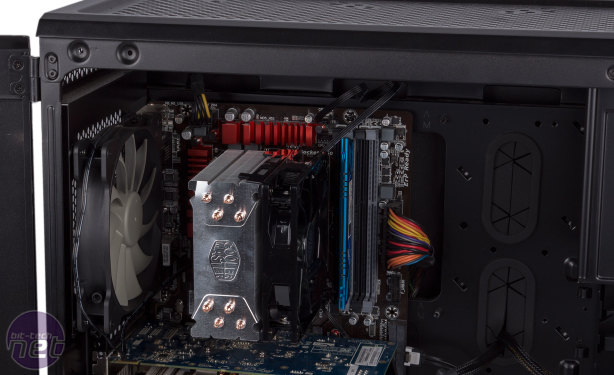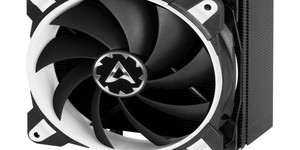
Performance Analysis
The performance figures don't paint a pretty picture for the Hyper 212 LED. The result of 55°C on the LGA1150 test system isn't awful, at least given the fact that it can happily tame an overclocked CPU that's similar to the one most enthusiasts will currently be using. That said, it's still beaten by nearly every other cooler, including Cooler Master's own Hyper 212X. This, perhaps, isn't surprising; that cooler features tweaks to the heatsink design and a faster fan, with the LED one here not dishing out that much air even at full speed.Our most demanding system, the LGA2011 one, soon overwhelmed the cooler, with the temperature gradually climbing over the course of a couple of minutes until the Tj Max value was reached, forcing the CPU to downclock and failing the test. The issue is most likely the relative lack of airflow – the Hyper 212X is not so different a cooler, yet kept the CPU at least 20°C below its Tj Max. It's also 7°C cooler than the Hyper 212 LED on the AMD test platform.
Noise from the LED fan is admittedly low, but this appears comes with the downside of it not being able to cope well with the heat output of overclocked CPUs, especially during prolonged periods of load.
Conclusion
With its older heatsink design and slower spinning fan, the only real reason you'd opt for this cooler over the identically priced and better performing Hyper 212X is for the red LEDs in the fan. If you're running an overclocked processor, however, it's hard to recommend doing this, as the fan just isn't that effective at evacuating heat from the heatsink, even when running at full pelt. If you're using a stock speed CPU, the Hyper 212 LED will serve you fine, but there are still better options out there.
MSI MPG Velox 100R Chassis Review
October 14 2021 | 15:04









Want to comment? Please log in.